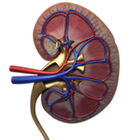Homeostasis Worksheets

Homeostasis worksheets and feedback loop labs that are designed for high school, middle school, and elementary school life science teachers. NGSS Life Science offers many great science lessons. Click the Free Lesson Plan (PDF) link below or become a member to get access to the answer key and editable file. Free types of evolution curriculum includes:
-

Human Body Systems Disorder Project  Free Lesson Plan (PDF)
Free Lesson Plan (PDF)
Lesson Plan (DOCX) & Answer Key with Membership
High School Project
Students will do a BLAST and learn about how the mutated protein affects cells, organs, and organ systems and those systems overall impact on homeostasis. The example students will use is sickle cell disorder.NGSS Standard
HS-LS1-1
HS-LS1-2
HS-LS1-3
Published by NGSS Life Science
-

Design a Homeostasis Lab  Free Lesson Plan (PDF)
Free Lesson Plan (PDF)
Lesson Plan (DOCX) & Answer Key with Membership
High School Lab
This is an introductory lesson into how to design an experiment. Students will practice writing a hypothesis. Students will create procedures to conduct their own experiment. Students will create a data table for their experimental data. Students will write a conclusion that has them focus on evidence from their experiment.NGSS Standard
HS-LS1-3
Published by NGSS Life Science
-

Homeostasis Test Question Bank  Free Lesson Plan (PDF)
Free Lesson Plan (PDF)
Lesson Plan (DOCX) & Answer Key with Membership
High School Test
Question bank to build assessments. An active membership is required to view questions.NGSS Standard
HS-LS1-3
Published by NGSS Life Science
-

Plant Growth Homeostasis Lab  Free Lesson Plan (PDF)
Free Lesson Plan (PDF)
Lesson Plan (DOCX) & Answer Key with Membership
High School Lab
Students will learn how to disrupt homeostasis in plants and use this disruption to understand biological processes. Students will be able to integrate how many processes are involved for plants to grow. Students will be able to design a guided inquiry experiment.NGSS Standard
HS-LS1-3
HS-LS1-4
HS-LS1-5
HS-LS1-6
HS-LS1-7
Common Core Standard
RST 9.10.3, 9.10.5, 9.10.7, WST 9.10.1b, 9.10.1e, 9.10.2a, 9.10.7, 9.10.9
Published by NGSS Life Science
-

Characteristics of Life Lab  Free Lesson Plan (PDF)
Free Lesson Plan (PDF)
Lesson Plan (DOCX) & Answer Key with Membership
High School Lab
Students will learn use their observation skills to determine if an object is living, dead, dormant, a product of a living thing, or never alive using the main characteristics of life.NGSS Standard
HS-LS1-3
HS-LS4-2
MS-LS1-1 (Cell Types)
Published by NGSS Life Science
-

Circulatory System Lab - Heart Rate Regulation Free Student Handout
Free Teacher Notes
High School Lab
In this heart rate lab, students learn how to measure heart rate and then they design an experiment to test the effects of an activity or stimulus on heart rate. In their lab report, students analyze and interpret the experimental data, and culminate with a presentation of their experiment to the class.NGSS Standard
HS-LS1-2
HS-LS1-3
MS-LS1-3 (HBS)
Published by Ingrid Waldron and Jennifer Doherty
-

Biological Acids and Bases Lab  Free Lesson Plan (PDF)
Free Lesson Plan (PDF)
Lesson Plan (DOCX) & Answer Key with Membership
High School Lab
In this introductory acids and bases lab, students will determine the pH of common household acids and bases and transfer their knowledge about acids and bases to the human body's homeostasis. This lab is an easy hands-on biochemistry lesson to introduce homeostasis to students.NGSS Standard
HS-LS1-3
Published by NGSS Life Science
